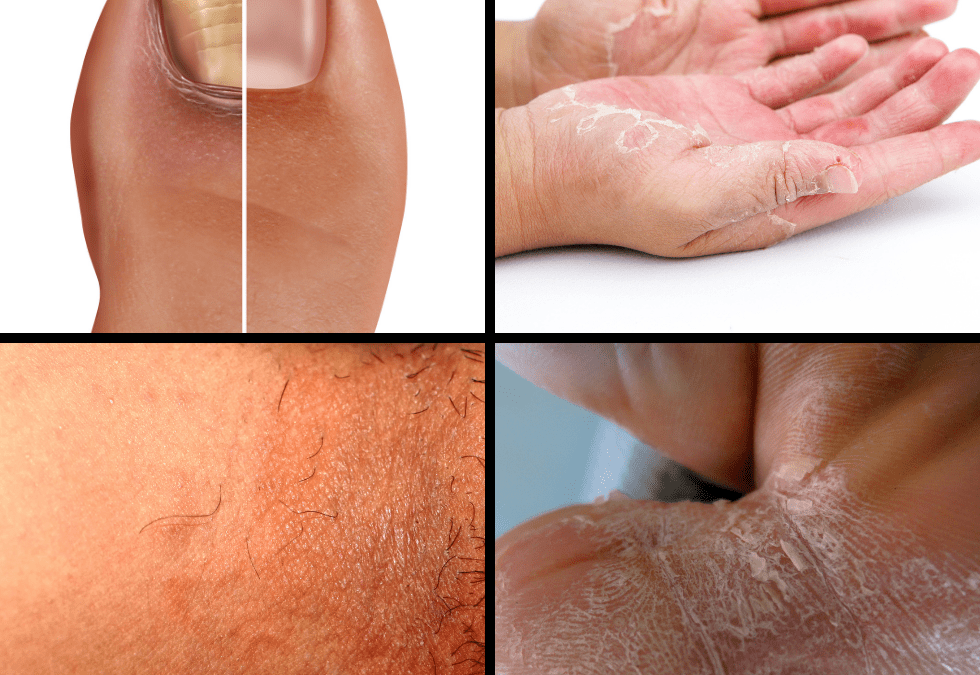Unfortunately, fungal infections can be present on several areas of the skin (i.e. feet, groin, face, hand), scalp or beard and nails. The most common cause of a fungal infection (dermatophytes) are Trichophytan, Epidermopython and Microsporum genera. The focus of this article will be on common areas of fungal infections that arise in adults.
Infection of the foot (Tinea pedis) – Commonly referred to as athlete’s foot, tinea pedis is usually seen in adolescents and adults. Direct contact with the fungus often occurs because of walking barefoot in a locker room or near a pool. Diabetes and wearing tight fitting shoes can increase the risk of athlete’s foot. Itchy, cracked and scaly skin in between the toes is the most common presentation. Sometimes blisters can also form. Topical creams are commonly used for treatment and can be found over the counter or prescribed
Infection of the nail (Tinea unguium) – an infected nail due to fungus usually turns white, yellow or brown in appearance. The nail also usually becomes thick. Toe nails are more likely to become infected than fingernails. Fungus likes to grow in moist, warm environments so things that can be done to reduce your risk of developing a fungal infection of your toenails are to keep your feet clean and dry (dry in between your toes after getting out of the shower, bath or pool), wear flip flops or protective footwear in a gym or locker room shower. If you suspect you have a toenail fungus, over the counter and prescription treatments are available, but it can take several weeks for the infection to resolve.
Infection of the groin (Tinea cruris) – Commonly referred to as jock itch, this type of fungal infection is seen in males more than females. It is often the result of spread from tinea pedis (athlete’s foot). Profuse sweating, obesity, diabetes and immune deficiency increases the risk of tinea cruris. Tinea cruris is red in appearance, raised and usually starts in the groin and can spread to the thighs, anus and buttocks. Topical treatment with creams whether over the counter or prescribed are usually the first line of therapy. Treatment of tinea pedis is important to prevent or reduce the risk of tinea cruris. Using dry powders and avoiding tight fitting clothes can also be helpful to reduce or prevent infection.
If you suffer from fungal infections, contact your primary care clinician. If you do not have a primary care clinician you can either become a member of Compassion Primary Care, a direct primary care (dpc) practice or schedule a non-member visit.
